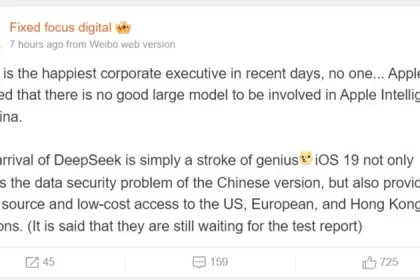In the competitive and vibrant scene of artificial intelligence, we have always witnessed the emergence and fall of new actors. As one of these emerging actors, the Chinese company Deepsik has been focused on the focus of ambitious claims of dramatically reducing the cost of training for advanced artificial intelligence models. The company claims that it has trained its R1 with a $ 5 million budget using 4 GPUs. While American competitors are incurred by multiple dollars and over billions of dollars to achieve similar models. But how much are these claims reliable?
According to a report released by the Semianalysis Research Institute, Dipsic invests about $ 1.5 billion to create its own infrastructure and uses a powerful set of 6,000 Hopper GPUs, including 6,000 H800 and 6,000 H100. These data provided by Semianalysis contradicts Dip -Sick’s initial claims of low costs of model training. It seems that the $ 5 million figure only part of the cost of education specifically reflects the cost of graphic processing at the pre -training phase, and has ignored the heavier research and development costs, mass processing of data and extensive infrastructure.
It is worth noting that Deepsic is actually coming to the heart of the Chinese High-Flyer Chinese investment company. The company had made significant investments in the areas of artificial intelligence and graphics processors for many years. In year 2, High-Flyer decided to establish Dipsic as an independent and specialist in the field of artificial intelligence. One of the distinct features of Dipsic is the adoption of a self -approach to many similar startups. Instead of dependence on cloud services, Deepsik guides its dedicated data centers. This independence enables dipsic to fully manage the testing and optimization process of its artificial intelligence models and to make the necessary changes quickly without the need to interact with external companies.
Another key strength of Deepsic is the ability to attract elites and superior talents from the China borders. The company is offering prominent artificial intelligence specialists from prestigious Chinese universities, such as Beijing University and the University of Zajiang by offering competitive and tempting compensatory packages. Reports show that some Dipsic artificial intelligence researchers receive $ 1.5 million annually, even beyond the payments of large Chinese artificial intelligence companies such as Monshat.

Instead of focusing on increasing the hardware scale, Dipsic implements a different strategy and emphasizes the promotion of algorithms and technical innovations. For example, the company has developed the Multi-Head Latent Attention algorithm (MLA), which has been the result of months of research effort and widespread use of graphics processors. The CEO of Deepsik points out that by adopting clever approaches and efficient algorithms, one can achieve more or even superior results with more limited resources.
However, Dip -Sick’s achievements are not only the cause of technical innovation, but also the massive investments and the attraction of elite talents also play a decisive role. From the perspective of many hardware experts, the company’s initial claims about the low cost of teaching artificial intelligence models are more promotional and far from reality. In fact, Like other leading artificial intelligence companies, Deepsik requires huge investments and persistent efforts to maintain their competitive position.

25,199,000
23,899,000
Toman

Source: Tom’s Hardware
RCO NEWS

















